Few symbols produce as much controversy within the Old Norse community as the one we call Vegvisir (“Wayfinder”), and that sometimes is referred to as the “Viking Compass” or “Nordic Compass”. Historians hate it, and tattoo artists love it. Why? Well mostly because we can’t really connect it with the Vikings that so many people want to connect it to, and probably because it looks and sounds really intriguing.
With all of this confusion going around the internet about the Vegvisir, I wanted to clear up as much as I can by walking you through exactly what we know about this symbol, what it means, where it comes from, and whether or not it is actually connected to the Vikings.
So if you’ve ever considered a Vegvisir tattoo, piece of jewelry, or poster on your wall, read this first and learn what you’re getting into.
First off, how does Vegvisir look?
I’ll be the first to admit it; Vegvisir is a damn cool symbol:

It can be described as four lines crossing each other in the middle, with different — but similar — symmetrical symbols and patterns decorating the ends of each line.
What are these symbols and patterns then? Well, it’s hard to say. It could be based on runes such as maðr (ᛘ) or yr (ᛦ) which can be found on each line, but the little variations don’t make much sense to most experts in the Old Norse language and Younger Futhark runes.
Some say that they might be cardinal points like a modern compass would have, while others attribute all kinds of meanings to them that are connected in some way with finding one’s way.
Vegvísir Origin & Meaning
The earliest known depiction of the Vegvísir was possibly in the Icelandic Galdrabók (a book of spells) from the 16th century.
I write possibly, because there is no direct mention of the name Vegvísir, but there is drawn a more elaborate Vegvísir-esque symbol toward the end of the manuscript, without any further reference or explanation:
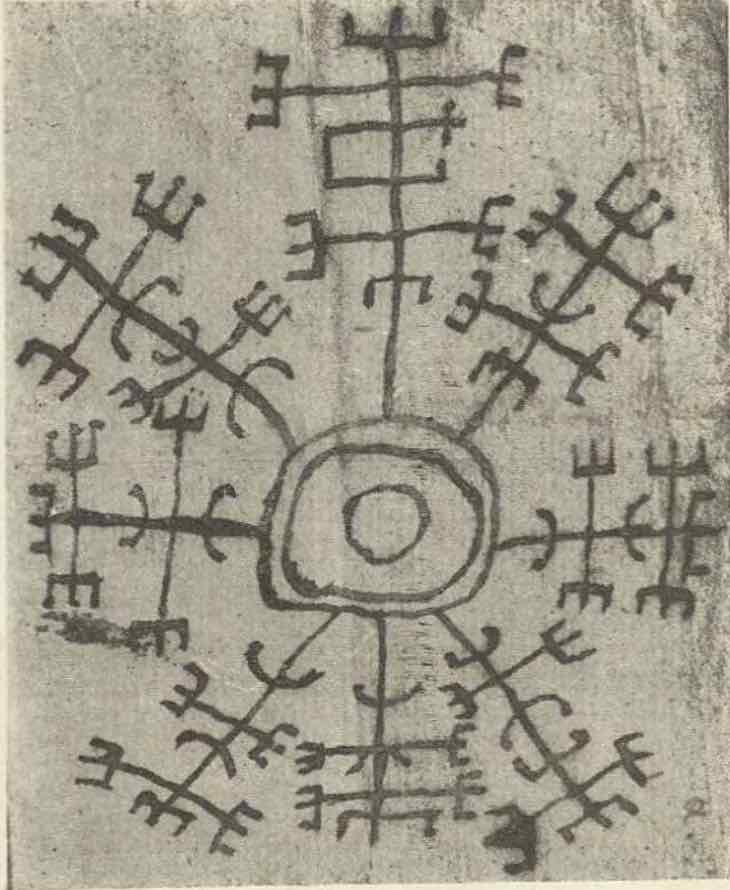
As you can see, it has some identical features to the later Vegvísir we can see in the Huld manuscript, which we’ll get to a bit further down, but it is a lot more elaborately drawn and doesn’t follow the same pattern.
Because of the many differences I’m personally not convinced that it is the same symbol, which is a sentiment many historians such as Old Norse specialist Jackson Crawford also hold.
The Galdrabók manuscript has been referred to multiple times over the years, but wasn’t publicized in its entirity until 1921 when Nathan Lindqvist published a Swedish translation along with the original drawings shown above.
That said, the symbol was clearly included in name and depiction in later publications of the Galdrabók, but more on that later.
If we assume that the symbol in Galdrabók was something else, the oldest clear depiction and mention of a symbol referred to as Vegvísir is found in the Icelandic Huld manuscript, collected by Geir Vigfusson in 1860:
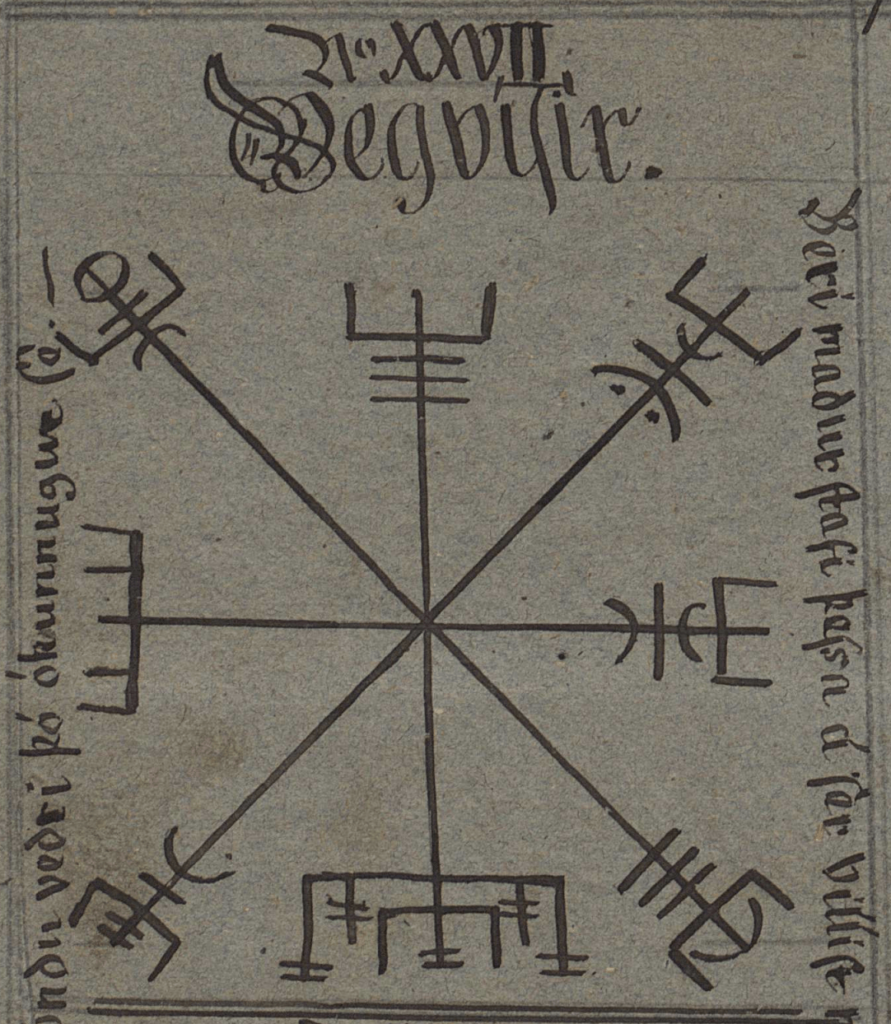
The following is written in Icelandic text surrounding the symbol:
Carry this sign with you and you won’t get lost in storms or bad weather, even in unfamiliar surroundings
Huld manuscript, p. 60
Now as I mentioned, there is some confusion whether or not the symbol included in the 16th century Galdrabók is the Vegvísir, and this stems from a wildly popular English iteration by Stephen Flowers published in 1989 (and updated in 1995), which clearly does include Vegvísir:
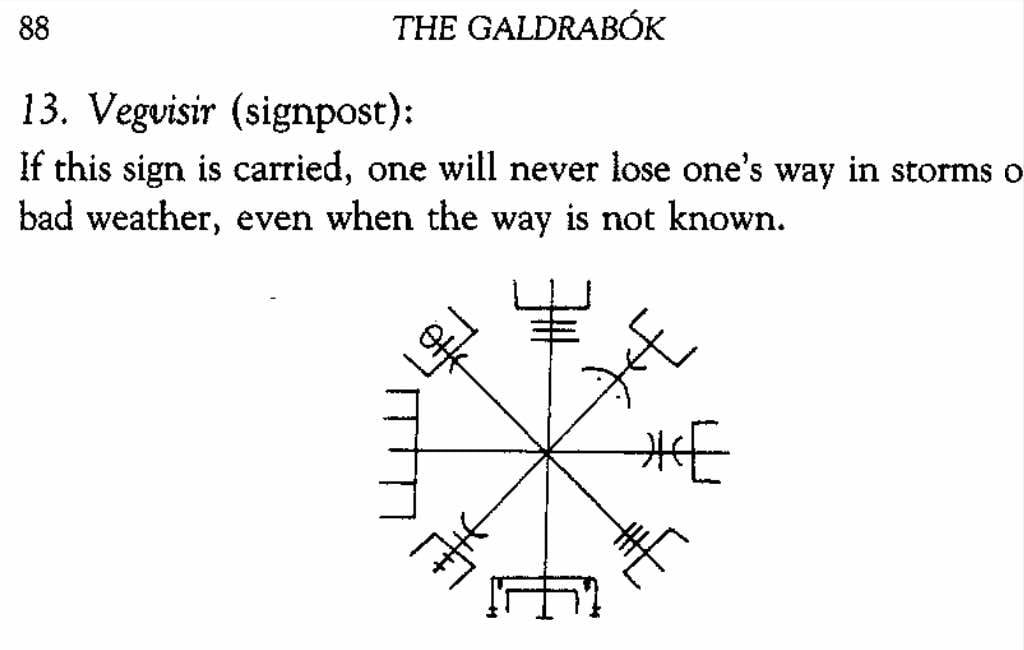
Here’s what the Flowers version of Galdrabók says about the meaning of Vegvisir:
If this sign is carried, one will never lose one’s way in storms or bad weather, even when the way is not known.
In the later edition of the book, Flowers explains that he included Vegvísir from the Huld manuscript, and not the Galdrabók (which is a bit weird since he claims to translate the latter).
There is also some proof that the symbol found its way to Iceland from England, and then there are others who claim it’s a symbol deeply rooted in Christian folk practice and belief.
For example, the symbol is displayed and described in “The Solomon’s testament” from 15th century England, and is described as a Christian mysticism symbol.
More on the Magical Staves in Galdrabók and the Huld manuscript
If we look at the contents of the original Galdrabók, we can see 47 spells and Icelandic magical staves that invoked all kinds of magic from Norse gods, Christian entities, as well as demons.
The book was supposed to aid, protect, and assist the owner and even included recipes for herbs and tinctures that could be used in conjunction with the spells and sigils.
The contents of Galdrabók were considered “dark heathen arts” and banned by the Christian church at the time, and books like it were generally found in the homes of self-proclaimed pagans (i.e. folks claiming to follow the Old Norse gods) and church-proclaimed witches (i.e. folks believed to be witches, which was mainly men at the time in Iceland).
To give you an idea of the contents and nature of Galdrabók and the Huld manuscript, they includes a wide variety of spells ranging from so-called “fart spells”—which when told would inflict everlasting gas upon your desired subject—to spells that would stop ones nosebleed:
If you want to stop someone’s nosebleed, you should write on his forehead with his own nosebleed “CONSUMMATUM EST”
(Consummatum est is Latin for “it is finished”, which is allegedly what Jesus Christ’s final words were while hanging on the cross.)
The Huld manuscript includes symbols along with instruction on how to use them, which are to be used in various ways to accomplish all kinds of outcomes.
From breaking locks by inscribing a symbol on the lock and then blowing on it, to impregnating the girl of your dreams by drawing a symbol on a piece of cheese and feeding it to her.
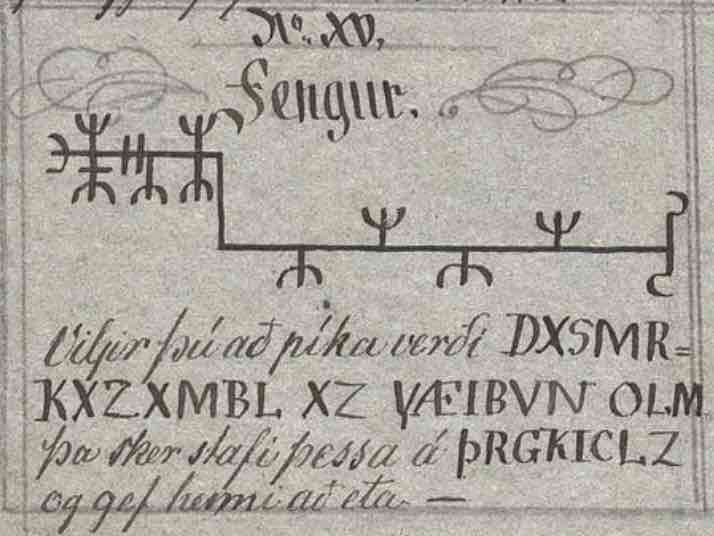

The point I’m trying to make here is that these books of spells were generally very questionable in nature, and included no references to where the symbols and spells originated from.
And this of course brings us to the next important question:
Was Vegvísir used by the Vikings?
There is no archeological or documented proof from the Viking Age that would support a connection between the Vegvísir and the Old Norse Scandinavians. The first documented proof of the symbol’s existence was at the very earliest created in the 16th century by Icelandic dark arts mystics, and more reliably as late as 1860 in the Huld manuscript.
For those of you keeping track, that’s between 500 and 800 years after the end of the Viking Age.
That said, I do believe that the symbol has held some meaning to the people of late medieval Iceland who carried it with them in their books about the dark heathen arts, as well as anyone who feels drawn to it and guided by it today.
But that does not actually prove that it was in use in the Old Norse world.
“But wait!”, you might proclaim, “The Norsemen didn’t generally write and publish books, so it’s still possible that it existed at the time, right?”.
And this is where the most convincing proof comes into play for me personally:
We haven’t actually seen the Vegvísir on any of the (likely more than) tens of thousands of objects with symbols on them that have been left behind, preserved, found, and dated back to the Viking Age by archeologists.
Not a single runestone, not a single longship, not a single piece of jewelry, not a single weapon, and not a single piece of armor with so much as a small portion of the Vegvísir on it.
Not until it shows up in Iceland at the very earliest around 1500 (around 500 years after the Viking Age ended, and that’s still a very generous estimation) as part of a book about dark arts and spells which also includes numerous Christian and demonic elements.
This is extremely telling, as in my experience the Vikings were very artistic and expressive; drawing, inscribing, chiseling, and in every possible way displaying the symbols they used and believed in (see my article on historically accurate Old Norse symbols and runes that Vikings did actually use).
So if it actually would’ve been a symbol in use by the Old Norse people, I have no doubt that they would have wanted to display it in all kinds of manners (which again, they didn’t).
I’d definitely assume that Vikings would find a guiding symbol and mystical compass that would show you the way, even when you’re lost, to carry a whole lot of meaning and power.
But not one of them chose to display it on their ship, shield, helmet, or tool, that we know of. And these items were often full of all kinds of symbols that seemed to carry some meaning to them, and even some that didn’t seem to mean much at all.
If you’re still not convinced, have a listen to what Old Norse specialist Dr. Jackson Crawford has to say about the symbol (well worth a listen if you’re into Old Norse history):
So Why is Vegvisir So Popular?
Whether we can link it to Vikings or not, the fact is that the Vegvísir symbol is extremely popular today among neo-pagans and Vikings (yes, the TV series) enthusiasts alike. Perhaps because the meaning ascribed to it is very attractive to modern-day Norse romantics, or simply because it looks very cool.
And it’s easy to assume the Norse linkage upon learning about the symbol. After all, why wouldn’t Vikings have a symbol that would help them find their way on the vast open seas?
It makes for one hell of a tattoo as well, which Icelandic artist Björk even seemed to think (getting one herself and claiming it was connected to and drawn in the foreheads of Vikings without any sources for said practices).
So tattoos and Björk are at least partly responsible for the popularity of the symbol, with tattoo artists around the world gladly inking the mystical-looking lines onto paying customers and telling them how it used to guide Vikings.
And why not? As I said, it’s a very well-designed symbol with a powerful meaning attached to it.
Is the Vegvisir Connected to the Nordics At All?
While it likely didn’t exist during the Viking Age, despite many people wanting it desperately to, it is still a symbol that seems to have been documented in the Nordic region and beyond from the 16th century and onwards.
On top of the Icelandic manuscripts that could at least partly be from around 1500 CE and that may or may not have included the symbol, there is also a Swedish manuscript from the later half of the 18th century referring to the Icelandic ones.
That said, the symbol itself is thought to have its roots in 15th-century England within Christian mysticism circles, so calling it Nordic might not be that accurate either.
What if I Still Want to Use the Vegvisir in a Tattoo or Jewelry?
I’d like to end this guide to the Vegvísir by saying that while the symbol might not be connected to the Norse world or Vikings directly, I still like the look of it and think it carries a powerful and intriguing meaning.
And after all, to each their own! If a Vegvísir can provide you with guidance and some form of happiness, and you’d like to wear it on a piece of jewelry or even as a tattoo — who is to say that’s wrong?
If it’ll help someone find the way or motivate them in any way, then I’d say it still carries plenty of meaning to them.
By the way, if you're looking for some historically accurate viking apparel and wall art, I've designed a large collection of Norse wall art and apparel based on and inspired by actual archeological finds from Viking Age Scandinavia.
Sources:
https://historiska.se/upptack-historien/artikel/en-islandsk-svartkonstbok/
https://books.google.se/books/about/The_Galdrab%C3%B3k.html?id=3TvXAAAAMAAJ&redir_esc=y
https://archive.org/details/CatalogueOfTheHarleianManuscripts3/page/n7/mode/2up
http://runeberg.org/bokobibl/1921/0243.html
https://arkivkopia.se/bok/runeberg-lapptrumm
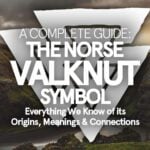 The Norse ‘Valknut’: Origins & Meanings of the Triangle Knot
The Norse ‘Valknut’: Origins & Meanings of the Triangle Knot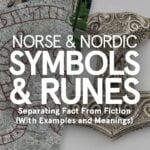 Old Nordic Symbols: Norse Runes & Viking Ornaments (Meanings & Examples)
Old Nordic Symbols: Norse Runes & Viking Ornaments (Meanings & Examples) Viking Music: What Instruments Did the Vikings Play? (Examples)
Viking Music: What Instruments Did the Vikings Play? (Examples) How Tall & Strong Were Vikings? (Based on DNA & Archeology)
How Tall & Strong Were Vikings? (Based on DNA & Archeology)

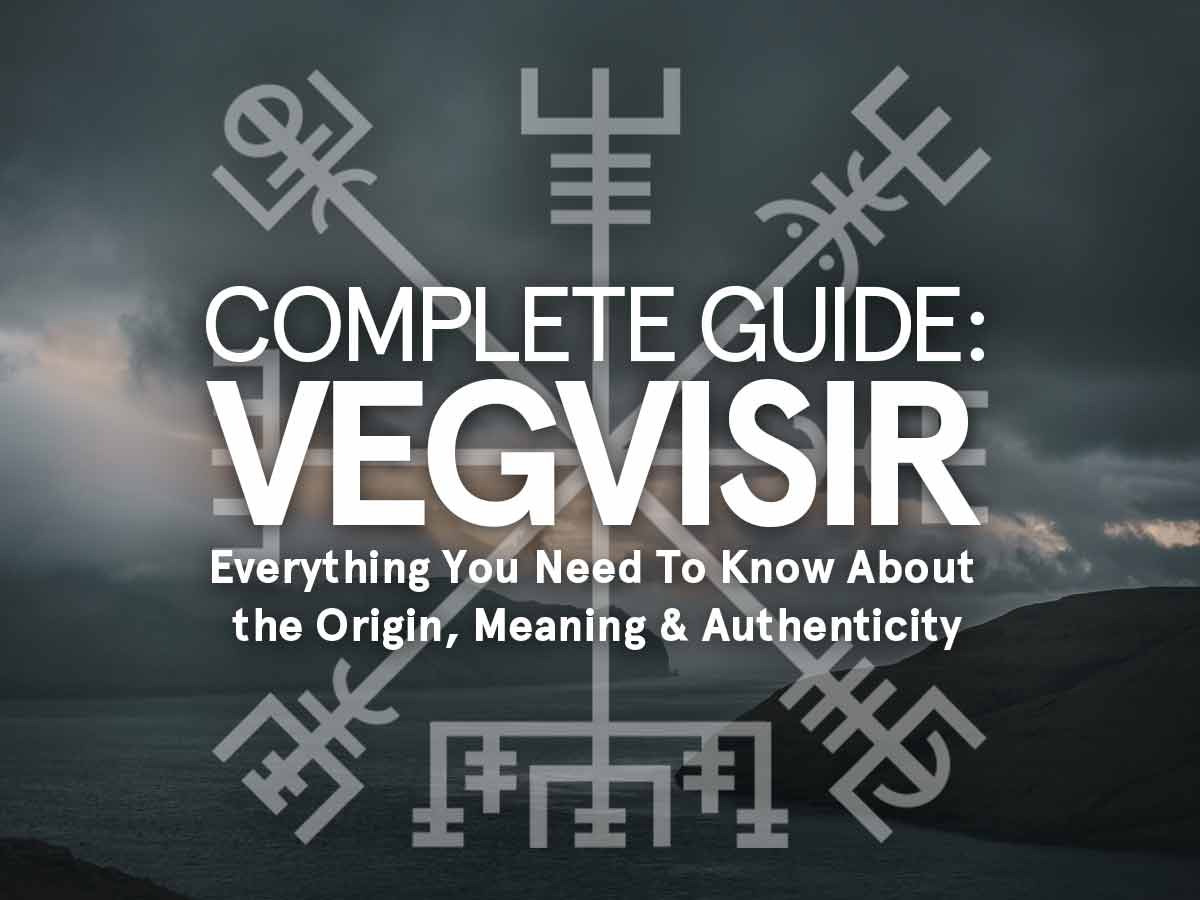

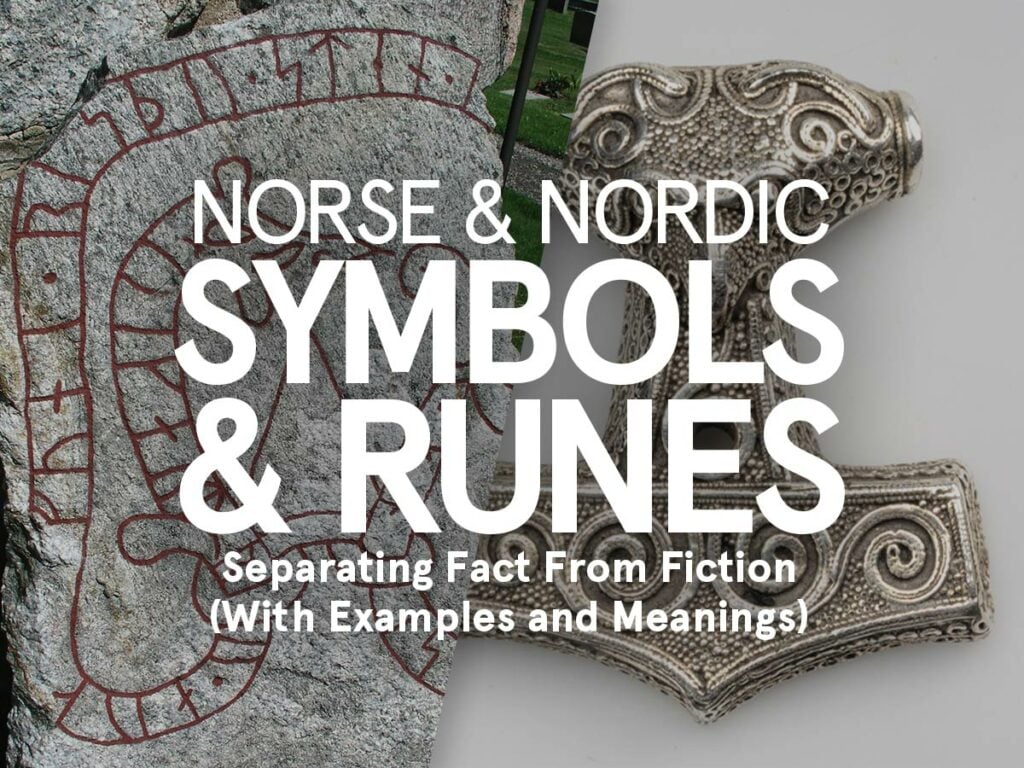
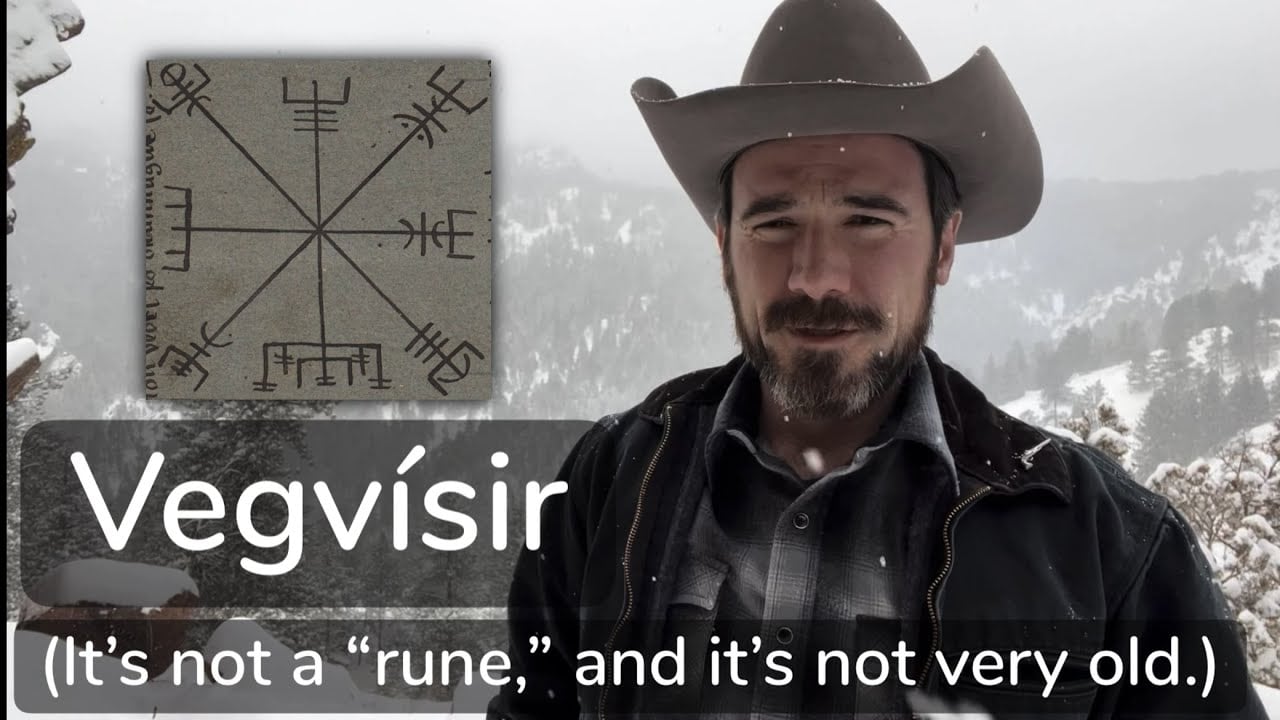

Great coverage man, appreciate it. The triskele gets some light controversy as well sometimes, because of the different variations and the fact it goes back to pre Celtic Neolithic Europe. Despite that most Europeans have some Neolithic farmer roots and the Celts certainly used the symbol. Back to the vegvisir, it does resemble a Nordic Bronze Age solar symbol to some extent.
Thanks for reading Josh! It is indeed intriguing how different symbols connect over the course of human history, and there are definitely some interesting links between bronze age petroglyphs and iron age symbols left behind by Scandinavians.
With the triskele we get even more intrigue attached, as variations of it pops up in so many different places around 5000 years ago. It’s not hard to imagine the Proto-Norse being heavily influenced by both Hellenic and Celtic symbols in many of the works of art and symbols that started appearing during the Bronze and Iron Age in Scandinavia.
I love the Nordic Bronze Age petroglyphs that have been left behind in caves and on mountain walls, and have been fortunate enough to have seen a bunch of them up close!
All the best,
—Karl
i discovered your page today, after trying to decide on the type of carving I want to get for my partner on a buffalo skull…Let me explain! LOL…
Not sure if this is ok, but I think it is, simply to cite the source – duh! – but I was on the site Skull Bliss@ https://skullbliss.com/collections/shop-all? and one of the intricately and expertly carved choices is “Vigvisir.” Realizing it was something probably associated with Viking culture, at least that’s what I first thought, I Googled “define Vigvisir” and I found you!
Through your article and you referencing Dr. Jackson Crawford, I know barely the surface of the vast amount of knowledge that exists for this ancient culture. I am trying to decide on one of these skulls to show my partner how much I appreciate the changes he’s made, the hard work he does day-in and day-out, and just how proud of him I am. You are a part of the decision, now, so thank you!
Hi Megan!
Thanks for reading, and kudos for looking up the history behind the Vegvisir symbol before pulling the trigger on the artwork in question! There are many consumers out there who simply assume something like this is “Viking” and go on with their lives.
I did browse the site you linked but unfortunately couldn’t really find anything relating to Norse or Viking culture there, but they do look awesome in general though! Hopefully you’ve found something fitting to give to your partner to show your appreciation of his journey.
–Karl
So are you saying it’s just a compass, or are you saying nobody knows the meaning, or are you saying you don’t know the meaning but other people might…
Hi Dan — here are my main takeaways:
– The Vegvísir first appears in the Huld Manuscript from 1860 — not during the Viking Age.
– It is Icelandic in origin and the name means “wayfinder” or “signpost.”
– It is part of Icelandic magical symbols called galdrastafir.
– The symbol represents protection and guidance in Icelandic magical tradition.: “Carry this sign with you and you won’t get lost in storms or bad weather, even in unfamiliar surroundings” –Huld manuscript (1860), p. 60
– There is no evidence that Vikings used or knew of the Vegvísir.
– It was not a navigational tool like a compass.
– It does not appear in Norse mythology, Viking-era texts, or on any archeological finds from the Viking Age.
– Its association with Vikings and Norse paganism is a modern misconception.
All the best,
–Karl